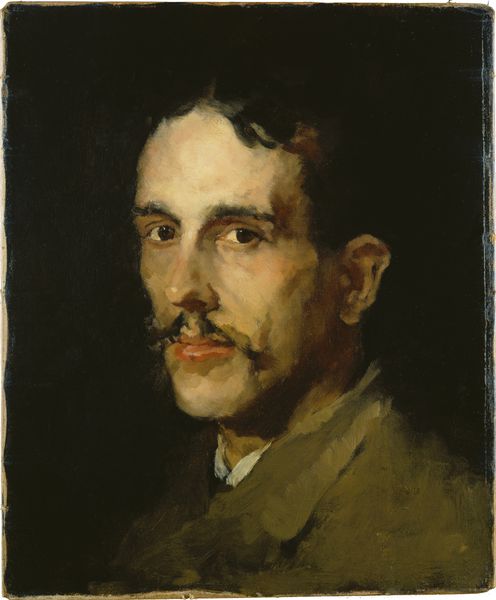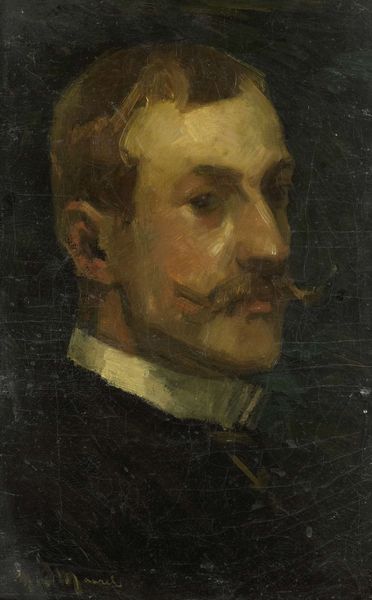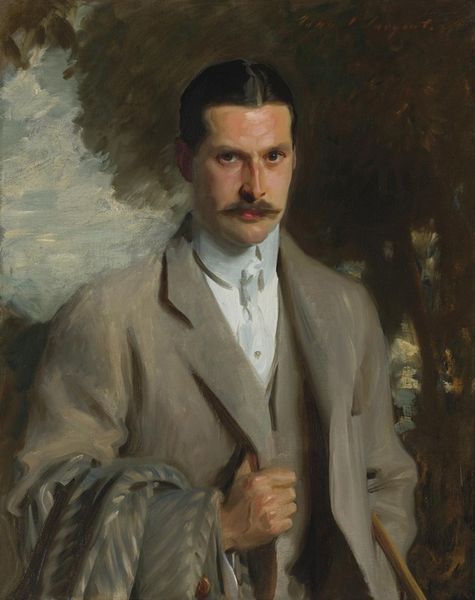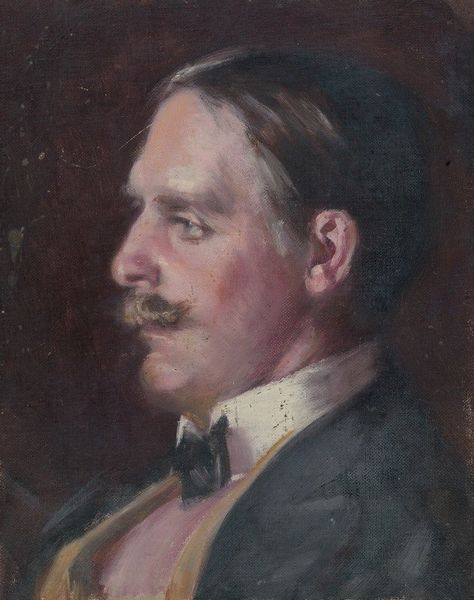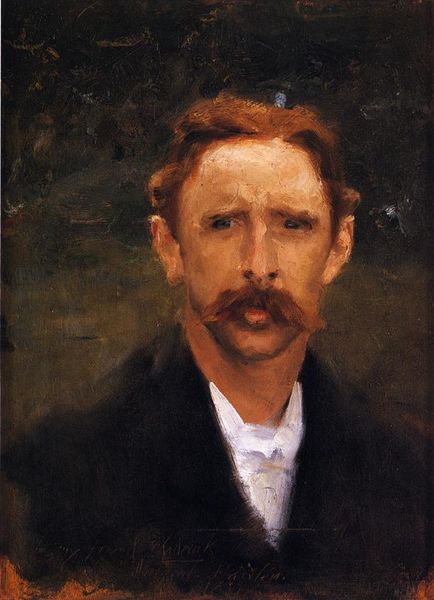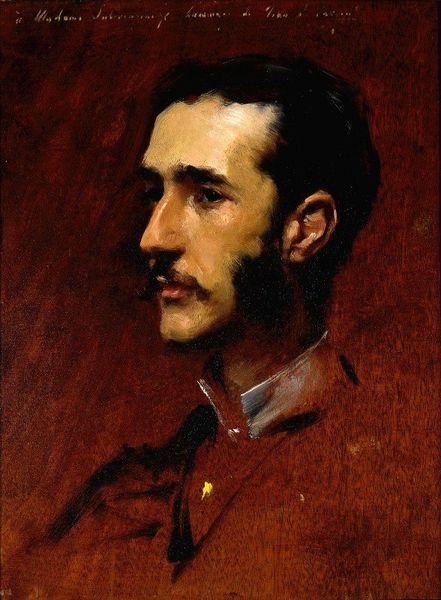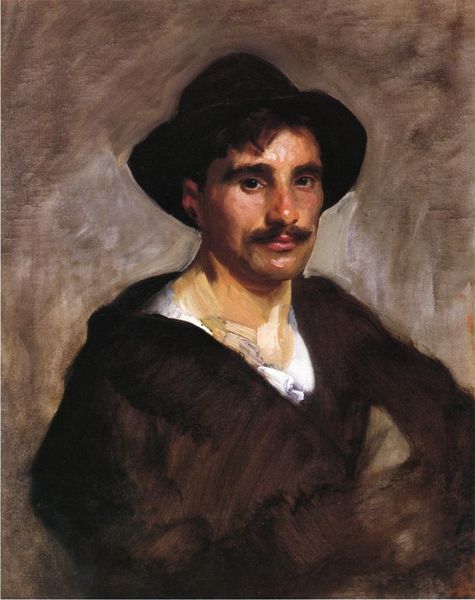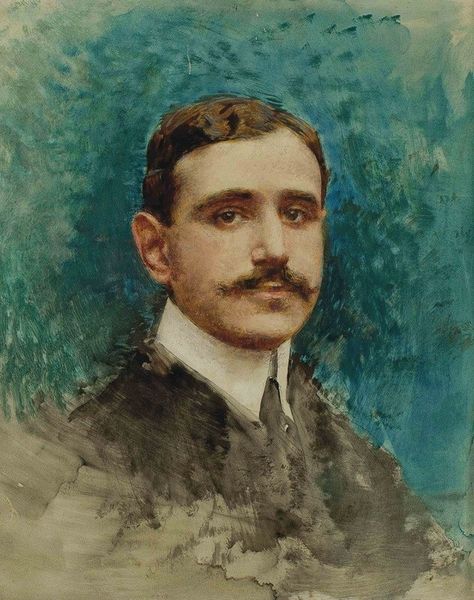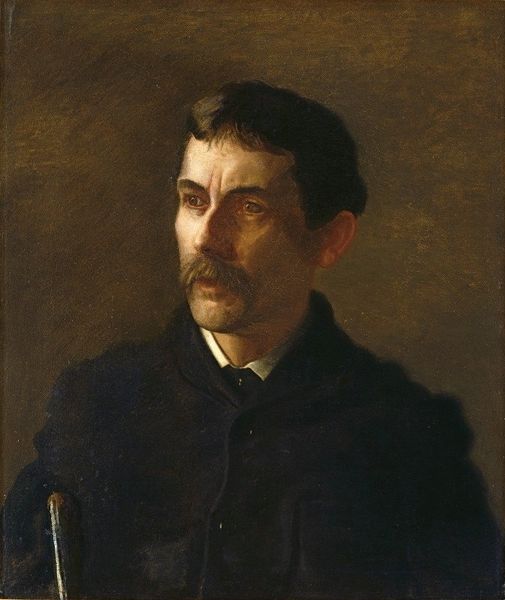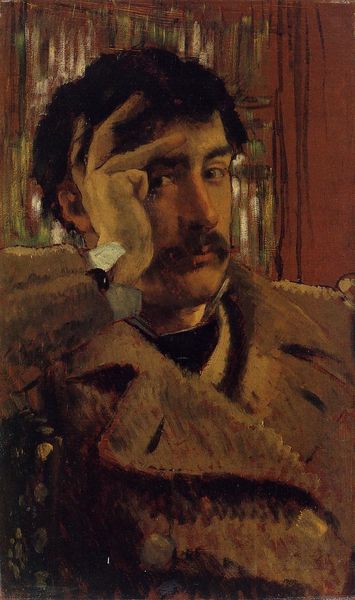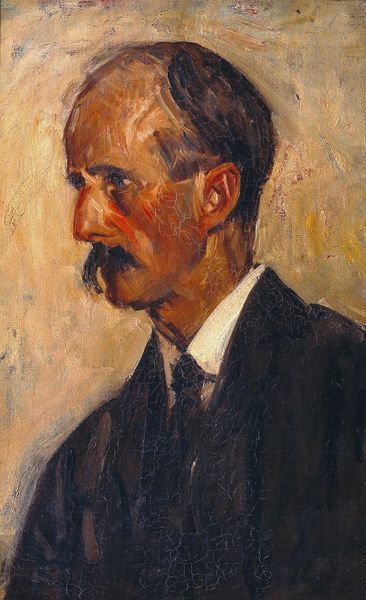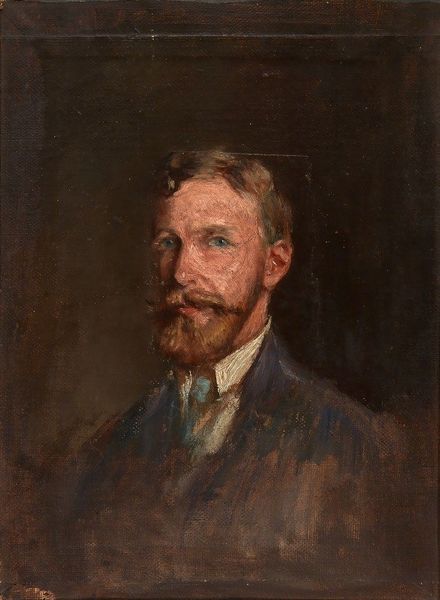
Copyright: Public Domain: Artvee
Editor: Right, so we're looking at "Fur Coat," an oil painting portrait made around 1898 by Alice Pike Barney. It has a subdued mood, almost melancholy. The man is looking off to the side and the dark palette creates a solemn atmosphere. What stands out to you most? Art Historian: It's interesting you pick up on the melancholy, because I think it is absolutely central to interpreting this portrait through its historical moment. Turn-of-the-century portraiture was often a display of social standing, and a projection of the ideal self was key, wouldn’t you say? Editor: Definitely, but this feels different, more introspective. Like the fur coat is shielding him, or even becoming a barrier. Art Historian: Precisely! And think about the rise of industrialism. Notice his attire—that fur could speak volumes about wealth, or conversely, a desperate attempt to cling to a fading aristocratic past amid encroaching modernity. What is he trying to preserve or protect, in your opinion? Editor: Maybe he’s grappling with changing societal roles and the pressures that come with them? It could reflect anxiety around the decline of certain class structures. Art Historian: Exactly. Barney’s portrait, by shying away from overt displays of power or accomplishment, opens a space for the vulnerability that characterized this period of dramatic social and economic transformation. Editor: That gives the work such a powerful new layer of meaning. I wouldn't have thought to look at the cultural shifts as actively informing the mood of the portrait itself! Art Historian: It's about understanding how historical anxieties can manifest in visual form. Next time you see a portrait, consider its date of creation, because the pose and dress might be communicating far more about the zeitgeist of its time. Editor: Thank you. I'll certainly keep that in mind now as I continue viewing more art here in the museum.
Comments
No comments
Be the first to comment and join the conversation on the ultimate creative platform.
